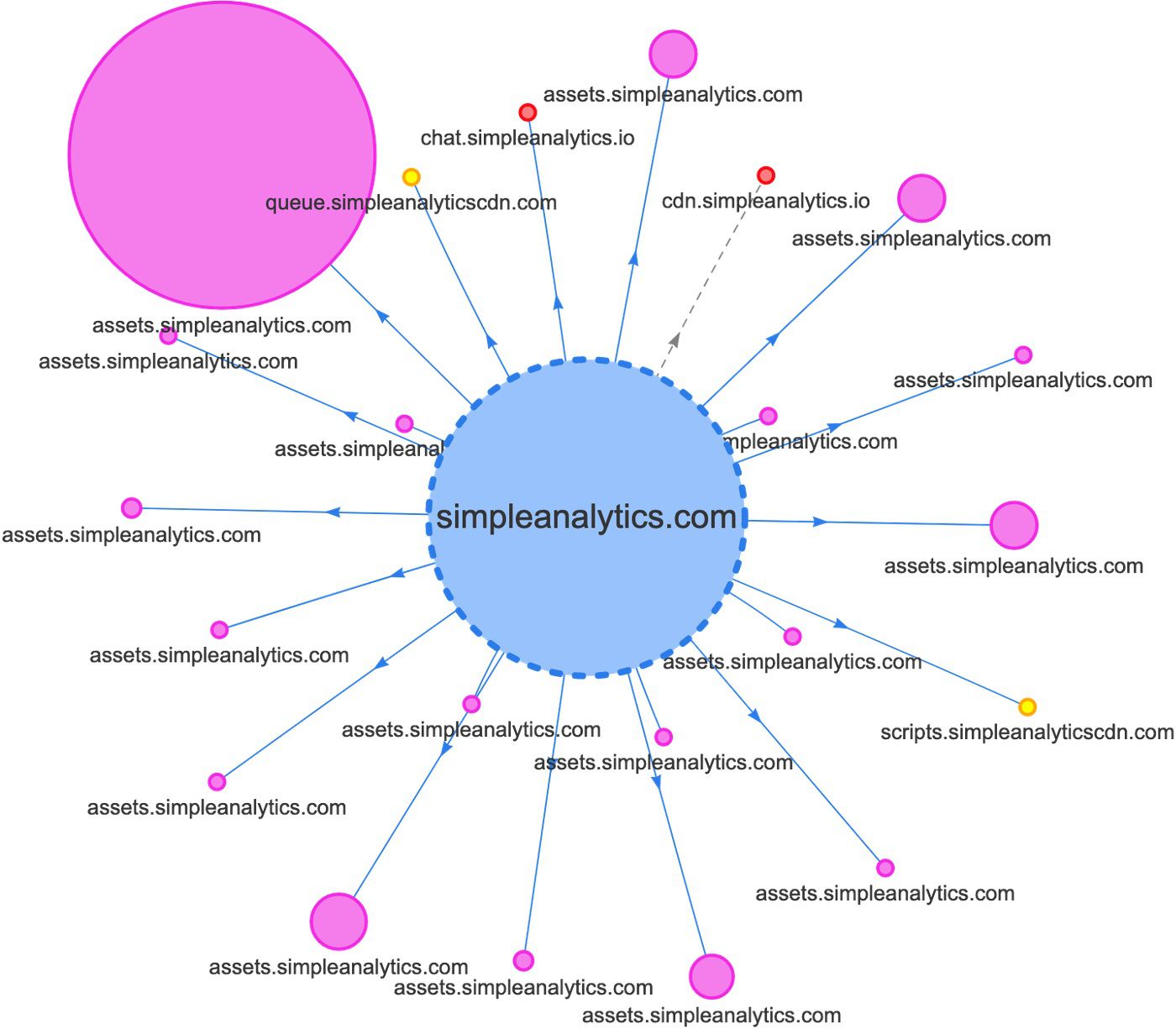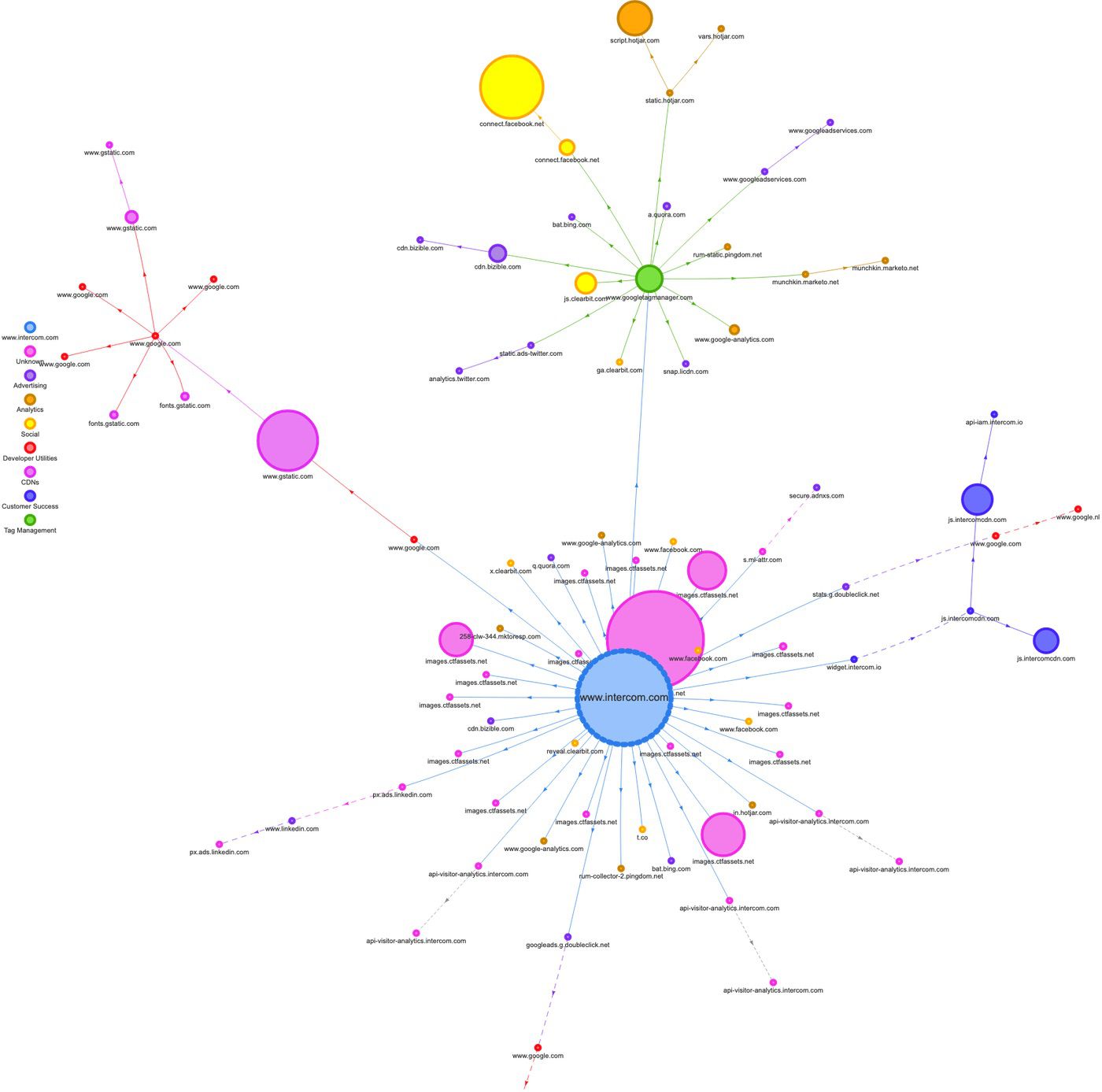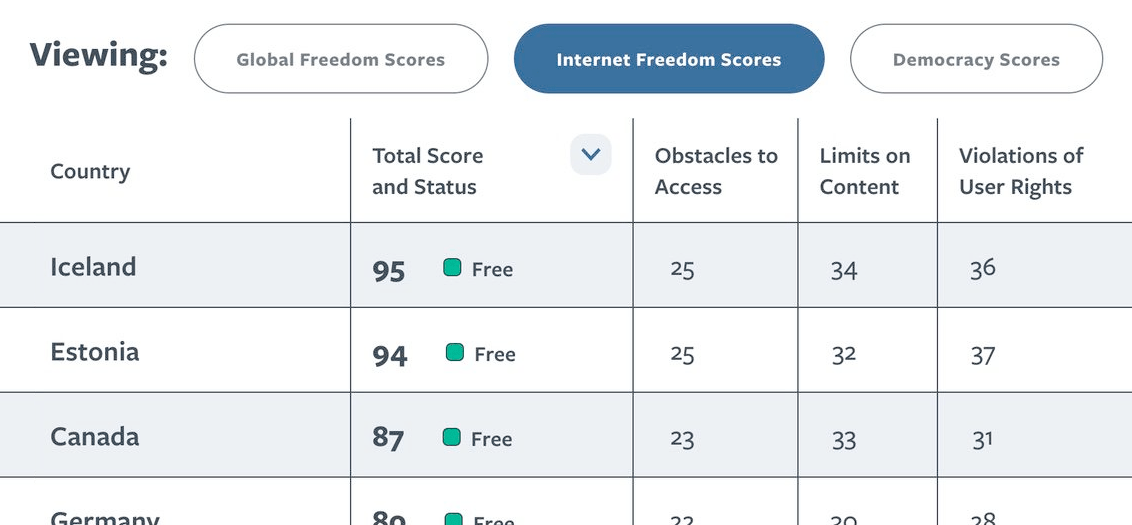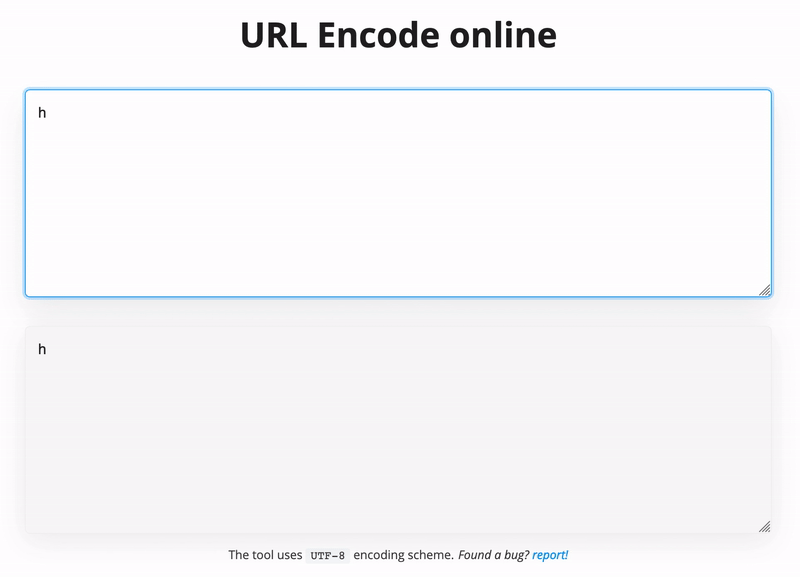As the founder of Simple Analytics, I'm running into privacy issues while building our product. Based on those learnings, I would like to show you some practical tips to improve the privacy of your visitors. Some tips seem very logical, but can be hard to implement. That's why I have provided examples with every tip, so you or your team can apply them without doing all the research.
In this post, I elaborate on third-party services, CDN providers, social widgets, being ethical towards your visitors, marketing emails, storing data, PII data, IP anonymization, syslog, and two-factor authentication.
Some tips might become a bit technical and if you don't have any technical background, feel free to skip those and forward them to your technical team.
- Third-party services
- Do not give too much power to your CDN provider
- Remove social widgets
- Don't trick your visitors
- Emails
- Where do you store your data
- Do not log or ask PII data when it's not needed
Let's dive in.
Third-party services
Most businesses use plenty of other third-party services. They help you with providing a better service to your customers, which is great. But it's hard to know how privacy-friendly these services are. While you might know them all (it's required by the GDPR), you don't know if you can trust them. It's healthy to always think of third-party services as untrustable and use them in your product like that. There are a few ways you can limit their effect on your visitors.
Load third-party scripts only when needed
Every so often, you need to use external scripts. For example, you could be using a chat service or a payment provider. Solution: Only load those scripts on pages where you use them.
For a chat, it may be load every page, but for a payment provider, it certainly wouldn't be the same. Don't include those script on every page.
When using a chat that you use on every page you could get a bit creative. For example, you could have a little button that only loads the external script when you click it.
There are a few ways to accomplish this. You can do it via services like Confirmic which offers a script blocking feature or do it manually.
See these examples on how to implement it:
Show Confirmic code example
<script type="text/x-confirmic" data-micropolicy="MY-POLICY-SLUG">
// This code only runs when consent for MY-POLICY-SLUG has been given
console.log("ok")
</script>Show manual code example
js
var button = document.querySelector(".chat-button");
button.addEventlistner("click", function() {
var script = document.createElement("script");
script.onload = function () {
// Do something with the chat script if needed
}
script.src = "https://chat.example.com/script.js";
document.head.appendChild(script);
}To check if your site uses third-party scripts you can use the Request Map Generator built by Simon Hearne (thanks to Jan Klimo). For Simple Analytics it looks like this:

In the diagram above you only see requests going to servers of Simple Analytics: simpleanalytics.com, simpleanalyticscdn.com, and simpleanalytics.io. The fat pink circle is our home page video which consumes the most bytes. We also use an external payment provider, but we only load the script when the client clicks on the signup, hence in this image you don't see any external scripts.
Compare that to another SaaS like Intercom:

There are many external scripts loaded from all kinds of different domains. I'm not saying this is good or bad, but it's a good practice to double-check if all those external parties are needed. Run the Request Map Generator and see what services you don't need.
Remember that all external parties can access the data being displayed on the page. If your visitors are logged in and see critical data, these external parties can see that as well.
Do not give too much power to your CDN provider
If you use a CDN you are giving them data about your visitors and the power to load a different script then your visitors' request.
Subresource Integrity
To prevent your CDN provider tampering with the source of your scripts you can use Subresource Integrity (SRI; the integrity attribute on your scripts). You need to create a hash of the source of the script and include this in the script tag via the integrity attribute. To generate the integrity hash you can use srihash.org or report-uri.com.
<script src="https://cdn.example.com/script.js" integrity="sha384-..."></script>Cross origin attribute
The crossorigin content attribute on media elements is a CORS settings attribute. This is needed to load scripts from other domains (a CDN domain for example). The anonymous keyword means that there will be no exchange of user credentials via cookies and some other data between your website and other domains.
You specify it like this
<script
src="https://cdn.example.com/script.js"
integrity="sha384-..."
crossorigin="anonymous"
></script>Referrer policy attribute
To prevent them knowing the page your visitors are viewing, you can add the referrerpolicy attribute with a no-referrer value to your script tags.
Show code example
<script
src="https://cdn.example.com/script.js"
integrity="sha384-..."
referrerpolicy="no-referrer"
></script>Although you are not sending the referrer here, the browser does send the origin header with CORS requests. This means that your CDN provider still gets the domain where your visitors land on. If they record IPs they can track the browsing behavior of your visitors. This can only be solved by choosing a CDN provider that anonymizes the IP addresses. The only CDN provider that currently offers IP anonymization is BunnyCDN (we are not affiliated with BunnyCDN).
If you combine all the above features, the HTML will look similar to this
<script
src="https://cdn.example.com/script.js"
integrity="sha384-..."
crossorigin="anonymous"
referrerpolicy="no-referrer"
></script>If you add scripts dynamically you can specify the above features as properties. The properties are case sensitive.
Both `crossOrigin` and `referrerPolicy` have one capital letter in them
js
var script = document.createElement("script");
script.src = "https://cdn.example.com/script.js";
script.integrity = "sha384-...";
script.crossOrigin = "anonymous";
script.referrerPolicy = "no-referrer";Content Security Policy
To add another layer of security for the script you load you can use a Content Security Policy (CSP). CSP is an added layer of security that helps to detect and mitigate certain types of attacks (including Cross Site Scripting (XSS) and data injection attacks).
There are a few ways you can create your policy: use a server where browsers automatically report to (or use a service like report-uri.com or Csper that do that for you) or generate a report yourself. There are some tools to help you with creating a report yourself: Report URI and cspisawesome.com have a wizard, 4ARMED and Csper have a browser extension, and Mozilla has great documentation.
When you created your policy, you can either specify it via a <meta>-tag or a header.
Afraid of blocking important assets? Test your CSP by using Content-Security-Policy-Report-Only to only report without blocking.
Remove social widgets
Social media companies have a bad reputation for collecting data from your visitors. There are many plugins and ways to track users. Your visitors don't choose to be tracked by those companies, you do.
If you are a visitor it's recommended to use an ad blocker like uBlock Origin. It's a well developed browser extension that removes all trackers and ads from your visits. There is a giant on/off button to disable it for the site you are on. It makes your browsing experience safer.
Your visitors can do something about it themselves, but there will always be people that don't know about this tracking or don't know how to prevent it from happening. That's why the EU came with the GDPR, California with the CCPA, Brazil with LGDP, and the UK with PECR.

On 29 July 2019, the Court of Justice of the European Union (the "CJEU") ruled that a company embedding on its website a social plugin, such as a Facebook “Like” button, can be considered a data controller [...] – fieldfisher.com
Although you are not controlling what those platforms behind your widgets do with the data from your customers, you are still responsible for what happens with this data.
Replace Facebook's share button
When you add a Facebook widget like a share button, Facebook recommends you use their scripts. This is great for them because they can collect more data about your visitors. Luckily, they provide another way without the use of their scripts.
Here is an example with custom buttons and a simple share link. I highly recommend using link implementation instead of any script implementation.

Make sure to add
rel="noopener"orrel="noreferrer"to prevent other pages accessing your window object with thewindow.openerproperty. This may allow the other page to redirect your page to a malicious URL. It's called reverse tabnabbing. Edit: Browsers implicitly setrel=noopenerfor anytarget=_blanklink since 2021.
HTML for above buttons
<section id="privacy-button-links-example">
<h1>Share this website via</h1>
<div>
<a
target="_blank"
style="background-color: #1877f2;"
rel="noreferrer"
referrerpolicy="no-referrer"
href="https://www.facebook.com/sharer/sharer.php?u=https%3A%2F%2Fwww.simpleanalytics.com%2Fen%2Fblog%2Fpractical-privacy-tips-for-your-business%3Futm_source%3Dfacebook&src=sdkpreparse"
><svg
xmlns="http://www.w3.org/2000/svg"
width="24"
height="24"
viewBox="0 0 24 24"
fill="white"
>
<path
d="M9 8h-3v4h3v12h5v-12h3.642l.358-4h-4v-1.667c0-.955.192-1.333 1.115-1.333h2.885v-5h-3.808c-3.596 0-5.192 1.583-5.192 4.615v3.385z"
/></svg
><span>Facebook</span></a
>
<a
target="_blank"
style="background-color: #1da1f2;"
rel="noreferrer"
referrerpolicy="no-referrer"
href="https://twitter.com/share?url=https%3A%2F%2Fwww.simpleanalytics.com%2Fen%2Fblog%2Fpractical-privacy-tips-for-your-business%3Futm_source%3Dtwitter&text=Practical%20privacy%20tips%20for%20your%20business%20%40SimpleAnalytic%0A%0A"
><svg
xmlns="http://www.w3.org/2000/svg"
width="24"
height="24"
viewBox="0 0 24 24"
fill="white"
>
<path
d="M24 4.557c-.883.392-1.832.656-2.828.775 1.017-.609 1.798-1.574 2.165-2.724-.951.564-2.005.974-3.127 1.195-.897-.957-2.178-1.555-3.594-1.555-3.179 0-5.515 2.966-4.797 6.045-4.091-.205-7.719-2.165-10.148-5.144-1.29 2.213-.669 5.108 1.523 6.574-.806-.026-1.566-.247-2.229-.616-.054 2.281 1.581 4.415 3.949 4.89-.693.188-1.452.232-2.224.084.626 1.956 2.444 3.379 4.6 3.419-2.07 1.623-4.678 2.348-7.29 2.04 2.179 1.397 4.768 2.212 7.548 2.212 9.142 0 14.307-7.721 13.995-14.646.962-.695 1.797-1.562 2.457-2.549z"
/></svg
><span>Twitter</span></a
>
<a
target="_blank"
style="background-color: #1ebea5;"
rel="noreferrer"
referrerpolicy="no-referrer"
href="https://api.whatsapp.com/send?text=Practical%20privacy%20tips%20for%20your%20business%0A%0Ahttps%3A%2F%2Fwww.simpleanalytics.com%2Fen%2Fblog%2Fpractical-privacy-tips-for-your-business%3Futm_source%3Dwhatsapp"
><svg
xmlns="http://www.w3.org/2000/svg"
width="24"
height="24"
viewBox="0 0 24 24"
fill="white"
>
<path
d="M.057 24l1.687-6.163c-1.041-1.804-1.588-3.849-1.587-5.946.003-6.556 5.338-11.891 11.893-11.891 3.181.001 6.167 1.24 8.413 3.488 2.245 2.248 3.481 5.236 3.48 8.414-.003 6.557-5.338 11.892-11.893 11.892-1.99-.001-3.951-.5-5.688-1.448l-6.305 1.654zm6.597-3.807c1.676.995 3.276 1.591 5.392 1.592 5.448 0 9.886-4.434 9.889-9.885.002-5.462-4.415-9.89-9.881-9.892-5.452 0-9.887 4.434-9.889 9.884-.001 2.225.651 3.891 1.746 5.634l-.999 3.648 3.742-.981zm11.387-5.464c-.074-.124-.272-.198-.57-.347-.297-.149-1.758-.868-2.031-.967-.272-.099-.47-.149-.669.149-.198.297-.768.967-.941 1.165-.173.198-.347.223-.644.074-.297-.149-1.255-.462-2.39-1.475-.883-.788-1.48-1.761-1.653-2.059-.173-.297-.018-.458.13-.606.134-.133.297-.347.446-.521.151-.172.2-.296.3-.495.099-.198.05-.372-.025-.521-.075-.148-.669-1.611-.916-2.206-.242-.579-.487-.501-.669-.51l-.57-.01c-.198 0-.52.074-.792.372s-1.04 1.016-1.04 2.479 1.065 2.876 1.213 3.074c.149.198 2.095 3.2 5.076 4.487.709.306 1.263.489 1.694.626.712.226 1.36.194 1.872.118.571-.085 1.758-.719 2.006-1.413.248-.695.248-1.29.173-1.414z"
/></svg
><span>WhatsApp</span></a
>
<a
target="_blank"
style="background-color: #2867b2;"
rel="noreferrer"
referrerpolicy="no-referrer"
href="https://www.linkedin.com/sharing/share-offsite/?url=https%3A%2F%2Fwww.simpleanalytics.com%2Fen%2Fblog%2Fpractical-privacy-tips-for-your-business%3Futm_source%3Dlinkedin"
><svg
xmlns="http://www.w3.org/2000/svg"
width="24"
height="24"
viewBox="0 0 24 24"
fill="white"
>
<path
d="M4.98 3.5c0 1.381-1.11 2.5-2.48 2.5s-2.48-1.119-2.48-2.5c0-1.38 1.11-2.5 2.48-2.5s2.48 1.12 2.48 2.5zm.02 4.5h-5v16h5v-16zm7.982 0h-4.968v16h4.969v-8.399c0-4.67 6.029-5.052 6.029 0v8.399h4.988v-10.131c0-7.88-8.922-7.593-11.018-3.714v-2.155z"
/></svg
><span>LinkedIn</span></a
>
</div>
</section>CSS for above buttons
section#privacy-button-links-example {
display: flex;
flex-direction: column;
width: 100%;
background-color: #eef9ff;
border-radius: 3px;
align-items: center;
justify-content: center;
padding: 3rem 1rem;
margin: 0 0 1rem;
}
section#privacy-button-links-example div {
display: flex;
align-items: center;
justify-content: center;
flex-wrap: wrap;
}
section#privacy-button-links-example h1 {
font-size: 30px;
text-align: center;
}
section#privacy-button-links-example a {
border: 0 solid #e2e8f0;
border-image: none 100% 1 0 stretch;
border-radius: 0.25rem;
color: #fff;
display: inline-block;
margin: 0.5rem;
padding: 0.75rem;
text-decoration: none;
white-space: nowrap;
}
section#privacy-button-links-example svg {
border: 0 solid #e2e8f0;
border-image: none 100% 1 0 stretch;
display: inline-block;
height: auto;
margin: -0.25rem 0.5rem 0 0;
max-width: 100%;
vertical-align: middle;
}
section#privacy-button-links-example span {
border: 0 solid #e2e8f0;
border-image: none 100% 1 0 stretch;
display: inline;
margin: 0;
}The link implementation is a simple link that opens the Facebook share page for your visitors. You can put the link behind a button or text link on your website.
Link implementation explained for nontechnical people
Let's say you need this link for Facebook:
https://www.facebook.com/sharer/sharer.php?u=https%3A%2F%2Fexample.com%2F%3Futm_source%3Dfacebook&src=sdkpreparseYou see a lot of weird characters in that URL (link). That's because the link is URL encoded. Use urlencoder.io to easily URL encode your website:
Prefix the output of urlencoder.io with https://www.facebook.com/sharer/sharer.php?u= and append &src=sdkpreparse behind it and you have your Facebook share link. Without the tracking and privacy-invasive data collection. You can now share this link with your developers of use it in the CMS of your marketing website.
Twitter embedded tweets
On the internet you see the Twitter widget being used a lot. But is it nessessary to send the data from your visitors to Twitter when they just want to see a tweet? A screenshot works just fine:
Don't trick your visitors
Tricking your visitors into doing something they don't want to do is bad, and you shouldn't do it. Sometimes it's great to open your website and follow your flow like a new customer. Be aware of things that are not clear and all the popups you see.
Cookie banners
When browsing the internet you will find many examples of websites trying to trick you in an opt-in for allowing to track you.
For example the home page of the New York Times. When you see a cross (X) you normally would close a dialog box without agreeing to what's being asked. The New York Times just sees it the same as "I agree":

Please don't do this.
Emails
It's related to don't trick your visitors, but I want to spend a separate section about emails alone.
Marketing emails
If you have a business, there is a great value by using the email address of your customers. Use it wisely to inform them about new features, help them get around your tool, etc. It's a perk for your business. But if you're sending marketing emails to your customers, be sure they want to be subscribed. You can ask during signup if it's okay for you to send them emails about your tool/service, or you ask if they are okay with you sending some setup guides or tips. Be aware that if you specify how you are going to use their email, and make sure you only use their email for that purpose.
Email tracking
It's harder to disable email tracking than enabling it. That's why most marketing emails contain trackers. Open rate is considered inaccurate because of client disabling images:
[...] an email is only counted as 'opened' if the recipient also receives the images embedded in that message, and a large percentage of your email users likely have image-blocking enabled on their email client. [...] – blog.hubspot.com
Email images
When an image-heavy email doesn't fully download and is viewed by the user, it could end up rendering like this for the subscriber:
When adding images to your emails and not embedding those images in the emails they can look very ugly. More and more email services will stop displaying email trackers and thus images as well. The new HEY.com service blocks the so-called tracking pixels. I guess that more will follow.
With Simple Analytics we love to share weekly and monthly email reports. When customers have enabled it we send them an email with all images embedded. No trackers or any remote images. No need to connect with anything outside their email client. Give back their privacy: they deserve it!
 Email reports feature of Simple Analytics
Email reports feature of Simple Analytics
How to keep a good reputation
Another thing with marketing emails is the unsubscribe header. Make sure you have the header set up as it improves your email reputation. The headers could look like this:
List-Unsubscribe: <https://example.com/unsub/?uuid=14b2-b2a1>, <mailto:unsubscribe@example.com>In a lot of email clients, the unsubscribe link is placed close to the spam button. You want people to unsubscribe instead of hitting the spam button to prevent damaging your reputation.
Where do you store your data
It's important to store your data in a country that protects the privacy of its people and the people outside of the country. With Simple Analytics we moved our servers to Iceland when we figured that was the best country privacy-wise. According to Freedom House Internet Freedom Scores Iceland is still the best option:
 Freedom House Internet Freedom Scores list or Iceland only.
Freedom House Internet Freedom Scores list or Iceland only.
We later realized Iceland was not the best option, provider-wise.
Here is why
- The Icelandic Modern Media Initiative was adopted by parliament but didn’t make it into law (so it’s not the internet freedom haven we thought it was).
- Our provider claimed to be the largest in Iceland but it was not as mature as bigger providers in Europe, which risked the security of our servers and infrastructure.
- They had downtime twice this year.
- The internet cables to Iceland are rather slow. Although it’s geographically ideal — located between North America and Europe — in practice, The Netherlands is a faster location for both.
- We don't want to move to Switzerland because it would be a marketing move only. The EU provides better privacy laws than Switzerland.
- We need to move anyway because our current provider does not offer the powerful servers we need.
- The second-biggest provider in Iceland is legally headquartered in Hong Kong, which is not a preferred location we want to store our data.
Copied from our docs page on locations.
We asked our customers if they would be okay with the move from Iceland to The Netherlands and everybody who voted agreed with our decision.
Be aware of where you put the data from your visitors. Do some research into the hosting provider you are using and the country where it's hosted. Don't pick the cheapest option without knowing why it's cheap.
Do not log or ask PII data when it's not needed
Personally identifiable information (PII) is information that, when used alone or with other relevant data, can identify an individual. It still happens quite frequently where websites or apps ask you to provide personal details which they don't even need.
Don't ask full names...
...Unless you really need it. Let people decide for themselves to add their full name. Just ask for a first name if you want to address people in your marketing emails, but don't ask for a full name.
For people reading that are tired of coming up with fake names: there are plenty of services out there to help create a fake name.
IP anonymization
This part is rather technical so bear with me. If you are a manager please forward this to your developers. IP anonymization is the most logical thing to do on your servers when talking about privacy. Yet, there are not that many examples of how to do it. A lot of the processes (applications) on your servers log data. For example, NGINX logs data about every request that comes in by default (it's customizable, however). This is great for debugging but it's less good for the privacy of your users. With NGNIX you can't format the error logs so it will always error in the same format. This is very privacy-unfriendly because it contains the full IP address of the user and usually the User-Agent (which can contain unclear identifiers when using the Facebook app).
You can probably guess a few of the elements of this Facebook User-Agent suffix but it's not all clear to me:
[FBAN/FBIOS;FBAV/221.0.0.0.0;FBBV/154514034;FBDV/iPhone9,4;FBMD/iPhone;FBSN/iOS;FBSV/12.3.0;FBSS/3;FBCR/Siminn;FBID/phone;FBLC/en_GB;FBOP/5;FBRV/155138002]It does not look like they are tracking their users via the User-Agent suffix, but they tamper with the User-Agent, at least.
Disable IP logging in HAProxy
To create your own logging for both error and normal log messages, you can customize your log format. It's best explained on the haproxy.com blog. See our code example for how we log:
Config to disable IP logging in HAProxy
defaults
# Docs about log-format see https://www.haproxy.com/blog/haproxy-log-customization/
# Terminate states: https://cbonte.github.io/haproxy-dconv/2.5/configuration.html#8.5
log-format "%si:%sp server: %s backend: %b code: %ST terminate: %ts"
log globalAn example output:
"%si:%sp server: %s backend: %b code: %ST terminate: %ts"
192.168.0.1:3000 server: sever_name backend: backend-name code: 0 terminate: CDFilters in syslog
Simple Analytics uses NGINX which in our case logs to rsyslog, often referred to as syslog. rsyslog is ofter included in Linux distributions (official website). Luckily rsyslog comes with a great module that's called mmanon. This module can be used to filter IP addresses for both v4 and v6 from rsyslog version 7.3.7.
How to implement anonymization with rsyslog
On your sever you can check which version of rsyslog you have by running rsyslogd -v.
You can enable IP anonymization by adding the following lines to your rsyslog config file. The config file usually lives in /etc/rsyslog.conf or /etc/rsyslog.d/50-default.conf.
module(load="mmanon")
action(type="mmanon" mode="zero" ipv4.bits="32" ipv6.bits="128")After you have changed this file make sure to restart rsyslog with service rsyslog restart.
Next level syslog
If you want to go indepth you can set up some advanced filters to remove sensitive data within your log files or log services.
You could create a syslog config file in /etc/syslog/.... I created a file called /etc/rsyslog.d/30-anonymize.conf containing:
sh
# Specify a custom format to anonymize your logs
$template anonymize,"%$year%-%$month%-%$day% %timegenerated:12:19:date-rfc3339% %app-name% %$!new%\n"
# This makes the template the default for all logs
$ActionFileDefaultTemplate anonymize
set $!new = $msg;
# Replace user agents
if re_match($msg,'(Mozilla\\/[0-9]\\.[0-9] [^"\']+)')
then {
set $!ext = re_extract($msg,'(Mozilla\\/[0-9]\\.[0-9] [^"\']+)',0,1,"");
set $!new = replace($msg, $!ext, "*** (user agent)");
}You can do way more, in our config we hide IPs, credit cards, and user agents.
Use two-factor authentication
This one is more security-related than privacy, but it's important either way.
If you want to secure the data of your users and prevent others from accessing their data, use a two-factor authentication system. Don't use SMS. Use TOTP (Time-based One-time Password) which has lots of apps and integrations. It does not require internet connectivity and can be installed on multiple devices.
Conclusion
While working on Simple Analytics, I'm constantly fighting the status quo by finding privacy-friendly ways of handling visitor data. There are way too few guidelines on how to prevent tracking in your own business.
Read the discussion on Hacker News
I hope this post makes the web a bit more privacy-friendly. Please let me know which tips I should add.



